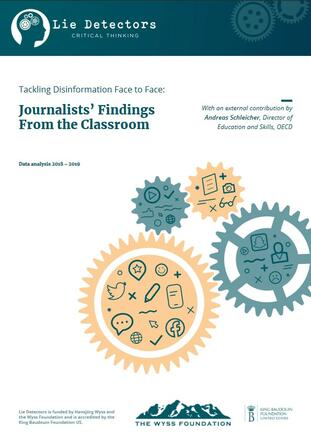This report is part of Lie Detectors’ effort “to initiate a discussion about the challenges of disinformation and the functioning of ethical journalism with young people, helping them thereby to become media-literate critical thinkers”.
Methodology
This report is the result of a survey. Between June 2018 and July 2019, it involved 6,858 schoolchildren aged 10-11 and 14-15, 89 journalists, and about 260 teachers to get qualitative as well as quantitative insights.
The findings
The study found out that schoolchildren and teachers are both active on social media and on a variety of platforms, but schoolchildren are more attracted by visual content (YouTube, Instagram and Snapchat). For example, only 26.8% of teachers use Instagram compared with 60.4% of schoolchildren and Snapchat is used by almost half of schoolchildren (48.6%), while teachers barely use it (3.8%). Almost half the teachers (49.6%) use Facebook, while only 11.9% of the schoolchildren use it.
The journalists involved in the project in classrooms found that “the majority of students have problems distinguishing between junk and real news. During an exercise to check the schoolchildren’s ability to spot disinformation, 95% of journalists reported at least one child in every classroom fell for a fake”.
Almost all teachers agree on the importance of media literacy, but they are not ready to deal with it as an independent topic: they are not given the necessary time or space and authorities do not support them enough.
After highlighting the main differences in platform usage between age groups (teens vs pre-teens), the report gives an overview of the feedback collected among schoolchildren and journalists.
Tags: Austria Belgium Germany Freedom of expression Journalism education Media freedom Fake news and disinformationThe content of this article can be used according to the terms of Creative Commons: Attribution-NonCommercial 4.0 International (CC BY-NC 4.0) . To do so use the the wording "this article was originally published on the Resource Centre on Media Freedom in Europe" including a direct active link to the original article page.


